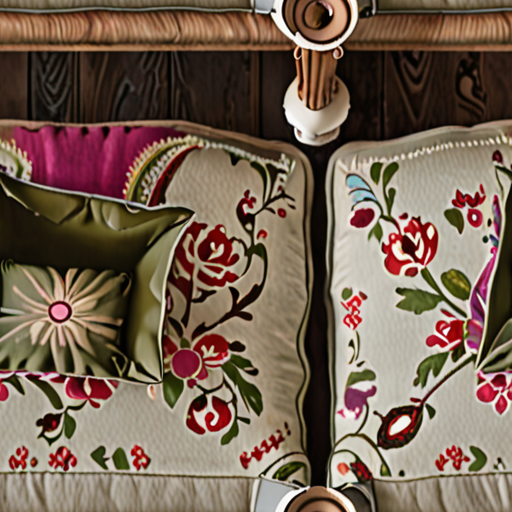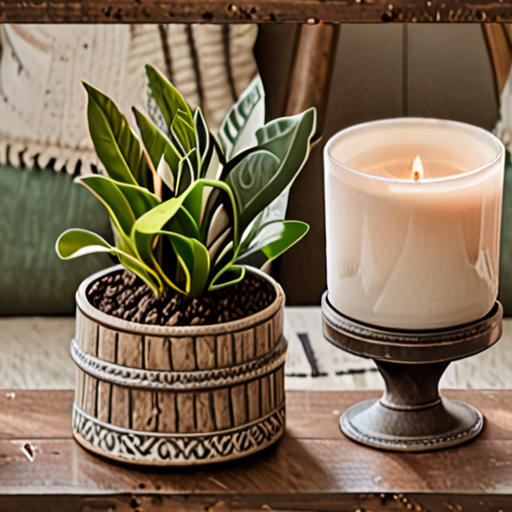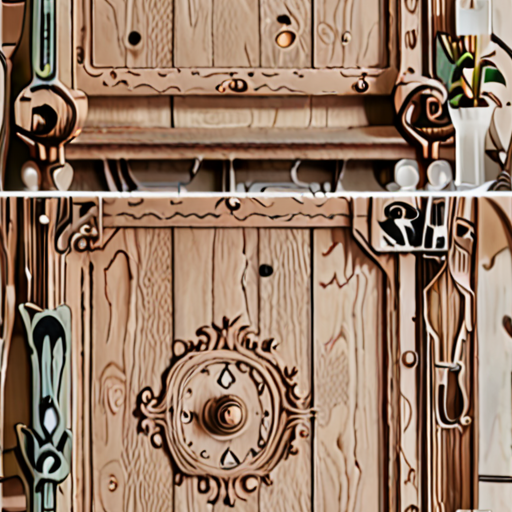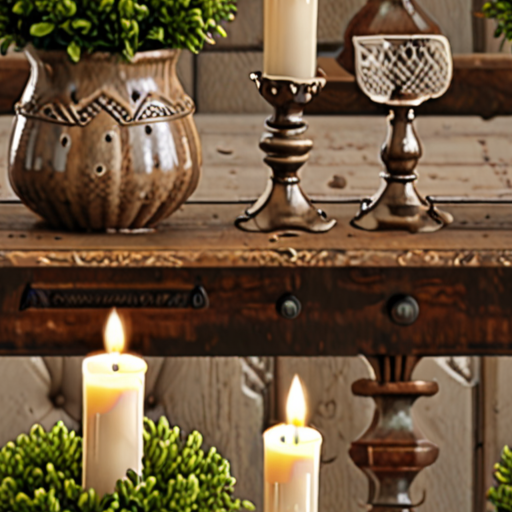Transforming your living space into a stunning sanctuary doesn’t have to break the bank. With a little creativity and know-how, you can achieve a beautiful, unique home decor on a budget that reflects your personal style without sacrificing elegance. From scouring thrift stores for one-of-a-kind vintage finds to repurposing old items into modern masterpieces, there are countless ways to infuse your home with character and charm without overspending.

Decorating Your House on a Tight Budget
As a DIY enthusiast, I’m always looking for ways to decorate my home without breaking the bank.
- Start by decluttering and organizing your space – it’s free!
- Get creative with second-hand finds and thrift store treasures.
- Repurpose old furniture and give it a fresh coat of paint.
- Shop during sales and look for discounts on home decor items.
- DIY your own decorations, like paper flowers or photo displays.
Thrift Store Finds
I love scouring local thrift stores for hidden gems.
- Old vases, picture frames, and decorative boxes can become beautiful centerpieces.
- Unique textiles, like vintage scarves or embroidered linens, can add color and texture to your space.
- Don’t overlook old books, which can become decorative bookends or coffee table toppers.
DIY Decorations
With a little creativity, you can turn ordinary objects into extraordinary decorations.
- Mason jars filled with candles, pebbles, or flowers make lovely centerpieces.
- Paper flowers in pastel colors can add a whimsical touch to your walls or windows.
- Photo displays made from reclaimed wood or string lights can showcase your favorite memories.
Paint and Repurpose
A fresh coat of paint can transform old furniture into something new and exciting.
- Give an old dresser a makeover with bold stripes or bright colors.
- Turn an old door into a headboard or coffee table.
- Upcycle an old pallet into a shelving unit or bench.
Final Tips
Remember, decorating on a tight budget requires patience, creativity, and resourcefulness.
- Keep an eye out for sales and discounts on home decor items.
- Shop online marketplaces or garage sales for unique finds.
- Involve friends and family in your DIY projects for added fun and collaboration.
The Rule of Three in Decorating
The rule of three is a fundamental principle in interior design that suggests introducing decorative elements in sets of three to create visual balance and harmony.
- Color Palette:
- Having three key staple colors is generally the most effective approach to creating a cohesive color scheme.
- This allows for a balanced mix of warm and cool tones, creating a visually appealing atmosphere.
Principles Behind the Rule of Three
The rule of three is based on several principles that contribute to its effectiveness:
- Symmetry and Asymmetry:
- A combination of symmetrical and asymmetrical elements creates visual interest and balance.
- Visual Weight:
- Distributing visual weight evenly among the three elements ensures a sense of stability and equilibrium.
Applying the Rule of Three in Decorating
To apply the rule of three in decorating, consider the following tips:
- Select three statement pieces:
- Choose three complementary patterns or textures:
- Balance three focal points:
By incorporating these principles and tips, you can effectively apply the rule of three in decorating and create a harmonious and visually appealing space.

Whats a Good Budget for Interior Decorating?
When it comes to interior decorating, setting a realistic budget is crucial to achieving your desired look without breaking the bank.
- As a general rule of thumb, allocate around 10% to 15% of your home’s total value for interior design expenses.
- This will give you a solid foundation for selecting mid-range products and materials.
Designer Level Finishes
If you’re aiming for high-end designer finishes, consider budgeting at least 20% to 30% of your home’s overall value.
- This will allow you to invest in premium materials, custom designs, and expert craftsmanship.
- Keep in mind that luxury finishes often come with a higher price tag, so be prepared to adjust your expectations accordingly.
Additional Costs to Consider
In addition to your initial design budget, factor in the following costs:
- Furniture and decor: 20% to 50% of your design budget
- Lighting fixtures: 5% to 10% of your design budget
- Rugs and flooring: 5% to 10% of your design budget
- Painting and wallpaper: 5% to 10% of your design budget
Remember to also account for any necessary permits, inspections, or professional fees associated with your project.
DIY vs. Professional Help
While DIY projects can be cost-effective, hiring a professional interior designer or contractor may be worth the investment for complex or high-stakes projects.
- Professional designers bring expertise, creativity, and access to exclusive suppliers and materials.
- However, their services come at a premium, so weigh the benefits against the added expense.
Final Tips
To stay within your budget, prioritize your needs, set realistic expectations, and shop smart for materials and furniture.
- Research local suppliers, compare prices, and negotiate deals whenever possible.
- Consider repurposing or refinishing existing pieces to save money and reduce waste.
By understanding your budget constraints and making informed decisions, you’ll be well on your way to creating a beautiful and functional space that reflects your personal style.

Setting Up a Decorating Budget
When it comes to decorating your home, setting a budget can seem daunting, but it doesn’t have to be.
- Determine Your Budget Range: Start by deciding how much you’re willing to spend on your decorating project. Consider factors like the size of the space, the type of furniture and decor you want, and any necessary repairs or renovations.
- Identify Your Priorities: Make a list of the things that matter most to you in your decorating project. Are you looking for a complete overhaul or just a few statement pieces? Knowing what you want will help you allocate your budget accordingly.
- Research and Gather Inspiration: Look for ideas online, in magazines, or by visiting showrooms and stores. Take note of what you like and dislike about different designs and styles. This will help you narrow down your options and stay focused on your goals.
- Create a Room-by-Room Breakdown: Divide your budget among the rooms in your home based on their priority and size. This will ensure that you’re allocating enough funds to each area and avoiding overspending in one room.
- Consider the 60-30-10 Rule: Allocate 60% of your budget to essential items like furniture and flooring, 30% to decorative items like lighting and accessories, and 10% to statement pieces or splurges.
- Set a Timeline: Create a schedule for your decorating project, including milestones and deadlines. This will help you stay organized and on track, ensuring that your project stays within budget and timeline.
- Be Flexible: Remember that budgets can change, and priorities may shift during the course of your project. Stay flexible and adjust your plan as needed to accommodate unexpected expenses or changes in your design vision.
- Seek Professional Help: If you’re feeling overwhelmed or unsure about how to proceed, consider hiring a professional interior designer or decorator who can guide you through the process and help you stay within budget.
By following these steps, you’ll be well on your way to creating a decorating budget that works for you and helps you achieve your design goals.
The 60 30 20 Rule in Decorating
This decorating rule suggests that you should cover your room with 60% of a dominant color, 30% of a secondary color, and 10% of an accent shade.
- Maintaining the perfect balance of tones is crucial in achieving a harmonious look.
- Pick colors that mingle well with each other to create a subtle combination.
- Avoid overwhelming the senses with too many bold colors.
- Consider the mood and atmosphere you want to create in your space.
- Think about the style and era of your furniture and decor.
When choosing your dominant color, consider the size and shape of your room.
- Large rooms can handle bolder colors, while smaller spaces require softer hues.
- Dark colors can make a room feel cozier, while light colors can make it feel more spacious.
- Consider the natural lighting in your room and how it affects the color palette.
- Don’t be afraid to experiment and try out different combinations before committing to a final design.
- Remember, the 60 30 20 rule is just a guideline – feel free to adjust it to suit your personal taste and style.
Some popular color combinations that work well with the 60 30 20 rule include:
- Neutral shades paired with bold accents, such as beige and navy blue.
- Monochromatic schemes featuring different shades of the same color, like various blues.
- Complementary colors that sit opposite each other on the color wheel, like orange and blue-green.
- Analogous colors that sit next to each other on the color wheel, like blue, green, and yellow.
Ultimately, the key to success lies in finding a balance between harmony and visual interest.
Tips for Implementing the 60 30 20 Rule
Here are some tips to keep in mind when implementing the 60 30 20 rule in your decorating project:
- Start by selecting a dominant color that sets the tone for the rest of the room.
- Choose a secondary color that complements the dominant color and adds depth to the space.
- Select an accent color that adds a pop of personality and creates visual interest.
- Consider the 60 30 20 ratio as a guideline rather than a hard and fast rule.
- Experiment with different color combinations to find what works best for your space.
Common Mistakes to Avoid
Avoid making these common mistakes when applying the 60 30 20 rule:
- Overwhelming the senses with too many bold colors.
- Failing to consider the mood and atmosphere you want to create in your space.
- Ignoring the style and era of your furniture and decor.
- Not thinking about the natural lighting in your room and how it affects the color palette.
- Being too rigid with the 60 30 20 ratio and not allowing for flexibility.

Minimum Budget for Interior Design
The cost of interior design can vary greatly depending on several factors, including the size of the space, the level of complexity, and the designer’s expertise.
- Budget-Friendly Options
- Premium Interior Design
- Factors Affecting Cost
- Size of the Space
- Level of Complexity
- Designer’s Expertise
- DIY vs. Professional Help
- Conclusion
For a basic interior design project, you can expect to pay anywhere from INR 20,000 to INR 50,000. This amount covers the cost of designing a living room with basic interiors and furniture.
A premium interior design project can cost anywhere from INR 75,000 to INR 1,00,000. This amount covers the cost of designing a high-end living room with luxurious interiors and custom-made furniture.
The cost of interior design can be affected by several factors, including:
Larger spaces require more materials and labor, increasing the overall cost.
More complex designs require more time and effort, increasing the cost.
Experienced designers charge higher rates due to their expertise and reputation.
While DIY interior design can be cost-effective, hiring a professional designer can provide better results and save time in the long run.
In conclusion, the minimum budget for interior design depends on several factors, including the size of the space, the level of complexity, and the designer’s expertise. By understanding these factors and considering DIY options, you can create a beautiful and functional space within your budget.

0 Comments